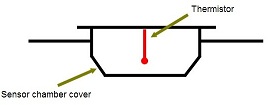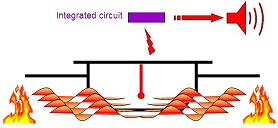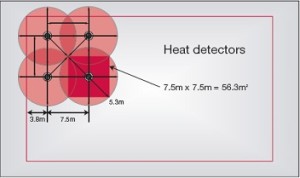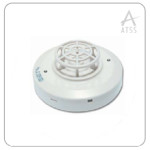SECURITY SYSTEMS SOLUTIONS
-
 Access Control
Access Control
-
 Asset Tracking
Asset Tracking
-
 Automatic Door
Automatic Door
-
 Baggage Scanner
Baggage Scanner
-
 Bell Timer
Bell Timer
-
 Boom Barrier
Boom Barrier
-
 BMS
BMS
-
 Burglar Alarm
Burglar Alarm
-
 Canteen Management
Canteen Management
-
 CCTV ANPR
CCTV ANPR
-
 CCTV People Counting
CCTV People Counting
-
 CCTV Surveillance
CCTV Surveillance
-
 CCTV Video Analytics
CCTV Video Analytics
-
 Central Vacuum Cleaner
Central Vacuum Cleaner
-
 DFMD
DFMD
-
 Electric Fence
Electric Fence
-
 EAS
EAS
-
 Fire Alarm
Fire Alarm
-
 Fire Hydrant
Fire Hydrant
-
 Fire Suppression
Fire Suppression
-
 Flap Barrier
Flap Barrier
-
 Garage Door
Garage Door
-
 Gas Detector
Gas Detector
-
 Gate Automation
Gate Automation
-
 GSM Communicator
GSM Communicator
-
 Guard Monitoring
Guard Monitoring
-
 HHMD
HHMD
-
 Home Automation
Home Automation
-
 Home Theatre
Home Theatre
-
 Hotel Lock
Hotel Lock
-
 ID Cards
ID Cards
-
 Lighting Automation
Lighting Automation
-
 Network & Communication
Network & Communication
-
 Nurse Calling System
Nurse Calling System
-
 Occupancy Sensor
Occupancy Sensor
-
 PA Systems
PA Systems
-
 Payroll
Payroll
-
 Road Blocker
Road Blocker
-
 Smart Lock
Smart Lock
-
 Time Attendance
Time Attendance
-
 Tripod Turnstile
Tripod Turnstile
-
 UVSS
UVSS
-
 Vehicle Tracking
Vehicle Tracking
-
 Video Door Phone
Video Door Phone
-
 Parking Management System
Parking Management System
-
 Visitor Management
Visitor Management
-
 Wireless Communication
Wireless Communication
Heat Detector
A heat detector is a device that senses an increase in temperature and activates an alarm. There are two types of heat detectors: fixed temperature and rate-of-rise. A fixed-temperature heat detector is set to activate at a specific temperature, while a rate-of-rise heat detector is activated when the temperature increases at a certain rate.
Some heat detectors use a thermistor, which is a type of resistor that changes resistance with temperature, to sense the increase in temperature. Others use a bimetallic strip, which is a strip of metal that bends when heated, to activate a switch. Heat detectors are often used in fire alarm systems to detect the presence of a fire and alert building occupants to evacuate.
How does Heat Detector work?

Heat Detector – A heat alarm is designed to detect heat instead of smoke, the alarm contains a thermistor that is set to respond to temperatures above 58°C.

When a fire breaks out hot air from the fire will rise and enter the sensor chamber.

When the temperature inside the chamber reaches 58°C a signal is sent to the integrated circuit which causes the alarm to sound alerting the occupants to the fire heat Detectors are normally used in environments where a smoke detector might generate false alarms.
Heat detectors can be situated in the kitchen and the garage, because heat alarms don’t react to smoke they are not prone to false alarms from cooking and exhaust fumes.
The rate of Rising heat detectors will alarm if the temperature rises very quickly, or if the temperature reaches a set threshold. This type of detector would be the first choice in an environment where a smoke detector could not be used.
In some environments, such as boiler rooms, fast rates of rise of temperature can be expected normally, meaning that there would be a risk of false alarm when using a rat-of-rise device. In this case, fixed temperature detectors give an alarm once the temperature has reached a preset threshold, most commonly 58°C or 78°C for EN54-5 Class AS or BS respectively.

When mounted on a flat ceiling, heat detection devices have an individual coverage of a 5.3m radius. However, these radii must overlap to ensure there are no “blind spots”. Therefore individual coverage can be represented by a square measuring 7.5 X 7.5m giving an actual coverage area of 56.3m² per device.
Heat Detector: How It Works and Its Coverage in Fire Alarm Systems
A heat detector is a device that senses an increase in temperature and activates an alarm. It is a vital component in fire alarm systems, often used in areas where smoke detectors might trigger false alarms, such as kitchens or garages.
Types of Heat Detectors
There are two main types of heat detectors:
- Fixed-Temperature Detector:
- Activates when the temperature reaches a preset level (typically 58°C or 78°C for EN54-5 Class AS or BS standards).
- Suitable for areas where gradual temperature changes are expected.
- Rate-of-Rise (ROR) Detector:
- Detects rapid increases in temperature, triggering the alarm even before reaching a fixed threshold.
- Ideal for environments where sudden temperature spikes indicate potential fire outbreaks.
How Does a Heat Detector Work?
Heat detectors use different technologies to sense temperature changes:
- Thermistor-Based Heat Detector:
- Uses a thermistor, a temperature-sensitive resistor, that changes its resistance with temperature variations.
- When the resistance change reaches a specific level, the alarm activates.
- Bimetallic Strip Heat Detector:
- Contains a metal strip that bends when heated, completing the circuit and triggering the alarm.
Fire Detector, Fire Alarm Panel, Fire Panel, Smoke Sensor, Fire Detection System, Smoke Detector Price, Fire Sensor
Heat Detector in Fire Alarm Systems
When a fire breaks out:
- Hot air rises and enters the sensor chamber.
- Once the chamber’s temperature reaches 58°C, the integrated circuit (IC) sends a signal, activating the fire alarm panel.
- The alarm alerts occupants, prompting evacuation.
Heat Detector Coverage
Fire Alarm, Fire Alarm System, Fire Alarm Panel
- When installed on a flat ceiling, a heat detector provides coverage within a 5.3m radius.
- To prevent blind spots, coverage areas must overlap.
- The effective coverage area of each device is approximately 56.3m², represented by a 7.5m x 7.5m square.
Where to Use Heat Detectors?
- Kitchens and Garages: Resistant to false alarms from smoke or cooking fumes.
- Boiler Rooms: Fixed-temperature detectors are ideal due to the naturally high temperature environment.
- Workshops and Factories: Prevents false alarms caused by dust or smoke particles.
Key Takeaway
Heat detectors play a crucial role in fire detection systems, offering reliable protection in environments where smoke sensors may not be suitable. With fixed-temperature and rate-of-rise detectors, they ensure prompt alerts and effective fire safety coverage.
SECURITY SYSTEMS SOLUTIONS
-
 Access Control
Access Control
-
 Asset Tracking
Asset Tracking
-
 Automatic Door
Automatic Door
-
 Baggage Scanner
Baggage Scanner
-
 Bell Timer
Bell Timer
-
 Boom Barrier
Boom Barrier
-
 BMS
BMS
-
 Burglar Alarm
Burglar Alarm
-
 Canteen Management
Canteen Management
-
 CCTV ANPR
CCTV ANPR
-
 CCTV People Counting
CCTV People Counting
-
 CCTV Surveillance
CCTV Surveillance
-
 CCTV Video Analytics
CCTV Video Analytics
-
 Central Vacuum Cleaner
Central Vacuum Cleaner
-
 DFMD
DFMD
-
 Electric Fence
Electric Fence
-
 EAS
EAS
-
 Fire Alarm
Fire Alarm
-
 Fire Hydrant
Fire Hydrant
-
 Fire Suppression
Fire Suppression
-
 Flap Barrier
Flap Barrier
-
 Garage Door
Garage Door
-
 Gas Detector
Gas Detector
-
 Gate Automation
Gate Automation
-
 GSM Communicator
GSM Communicator
-
 Guard Monitoring
Guard Monitoring
-
 HHMD
HHMD
-
 Home Automation
Home Automation
-
 Home Theatre
Home Theatre
-
 Hotel Lock
Hotel Lock
-
 ID Cards
ID Cards
-
 Lighting Automation
Lighting Automation
-
 Network & Communication
Network & Communication
-
 Nurse Calling System
Nurse Calling System
-
 Occupancy Sensor
Occupancy Sensor
-
 PA Systems
PA Systems
-
 Payroll
Payroll
-
 Road Blocker
Road Blocker
-
 Smart Lock
Smart Lock
-
 Time Attendance
Time Attendance
-
 Tripod Turnstile
Tripod Turnstile
-
 UVSS
UVSS
-
 Vehicle Tracking
Vehicle Tracking
-
 Video Door Phone
Video Door Phone
-
 Parking Management System
Parking Management System
-
 Visitor Management
Visitor Management
-
 Wireless Communication
Wireless Communication


